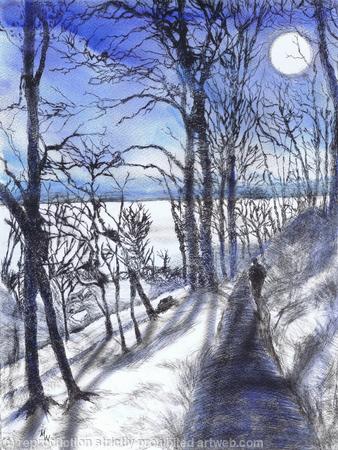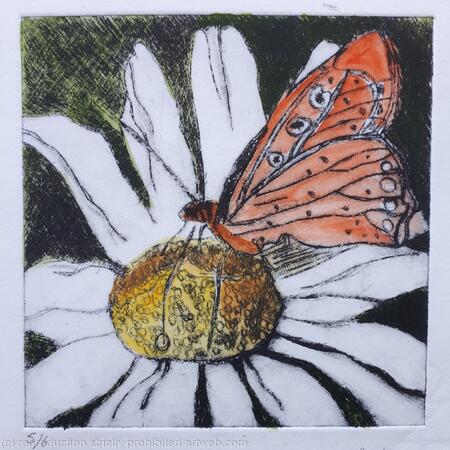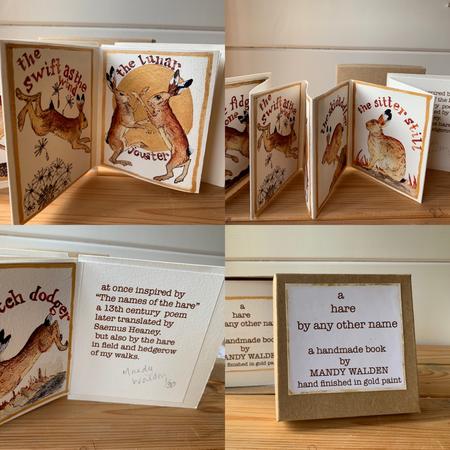There are various angles from which one may approach, and become involved in, mixed-media printmaking. Contemporary printmaking, of course, is staggeringly diverse in its scope, with some practitioners being especially committed to a particular technical process, perhaps only occasionally venturing outside of its boundaries for the purpose of experimentation.

Then, there are the printmakers who allow the intended project at hand to guide their decisions with regard to process. It may not be the aesthetic of a specific printmaking technique that inspires them, but instead the desire for a particular image quality or even whatever process is most convenient, in the context of their own resources.
Alternatively, you may wish to draw attention to the printmaking process itself with your approach, perhaps reframing and contextualising the very function of printmaking, as is inherent to a significant proportion of postmodern practice. As part of this, you might blend printmaking techniques with non-print processes as part of a conversation across disciplinary boundaries.

So, whether your own idea of “mixed-media printmaking” entails pieces that combine different print processes but remain ostensibly “printed works” overall, or instead works for which print might be just one component, what are some of the key philosophical and practical factors to bear in mind?
Combine print processes confidently with these technical tips
It is naturally important to underline first that the mixing of printmaking processes is almost synonymous with experimentation. Indeed, if you have a well-formed idea, you may gain worthwhile results from deliberately eschewing the “right” method for a particular process.
Nonetheless, the below tips may be helpful to your efforts to achieve your goals from mixed-media printmaking.
- Ask yourself what image quality you desire. It may be the case that the quality of image you seek is especially associated with a particular process that might serve as an important “voice” in the overall image — for example, drypoint mark with its softness and delicacy, or lithography with its luminosity and flatness. This may provide a useful starting point.
- Begin with processes that yield a flat surface. Again, this might not apply in all instances, but you may nonetheless be thankful for having started with a process, such as lithography or screen printing, that produces a flat surface. This will help to ensure a clear image.
- Be wary of water-based inks when dampened paper is required. Some water-based inks involved in screen printing are still water-soluble even once they have dried; this will prevent you from soaking them in the normal fashion for processes where the paper needs to be dampened. If you will be doing this quite often, one solution could be to use acrylic inks that are capable of being soaked with no ill effect.
- Consider printing intaglio matrices last. Intaglio printmaking, of course, is associated with the creation of what might be deep recesses, and therefore a very physical ink surface. You will need to allow this surface to dry before performing any subsequent printing, if squishing is not to occur. Leaving the printing of intaglio matrices until last will help you to keep this aspect of the print layer.
- Think carefully about the implications of sequence and timing. Although, again, no absolute rules exist in terms of how you should sequence and time different layers of printing — multiple stages sometimes happening in one day, or only taking place over weeks or months. Whatever strategy you do choose here will have consequences. If, for example, you attempt to print a relatively dry layer over a very oily layer that has only recently been applied, the oily layer may resist the dry layer on top of it, a phenomenon known as “wet rejection”. Air-drying may be one way to speed up the drying process to help avoid this problem, if you have little option but to print layers in swift succession.
Which overarching print strategy may be best for you?
Many approaches exist by which artists may deploy printmaking in the creation of mixed-media works. Some artists, for example, may be principally inspired by such attributes of the print as the matrix — such as the metal plate or block of wood — or the multiple.

The simplest way to embrace mixed-media printmaking is to produce an “enhanced” print; this is a work that the artist essentially conceives as a print, but which is also enhanced by hand. For instance, you may hand-colour your prints, incorporate collage elements, or hand-apply a material such as a wax or varnish to distress, stain or coat the surface.

Another option, of course, is to move your printmaking into a somewhat more sculptural domain, such as by using printed material in the creation of three-dimensional objects. Taking on sculptural projects that include printmaking may also require you to think again about the surface that you print on, given that such materials as wood, metal and glass won’t be as anonymous in the final printed work as paper is when used as a support in two-dimensional pieces.
What have your own experiences been with mixed-media printmaking as a practitioner or observer, and what projects in this realm could you see yourself taking on in the weeks and months ahead? Feel free to share your thoughts in the comments section below.
Further reading






